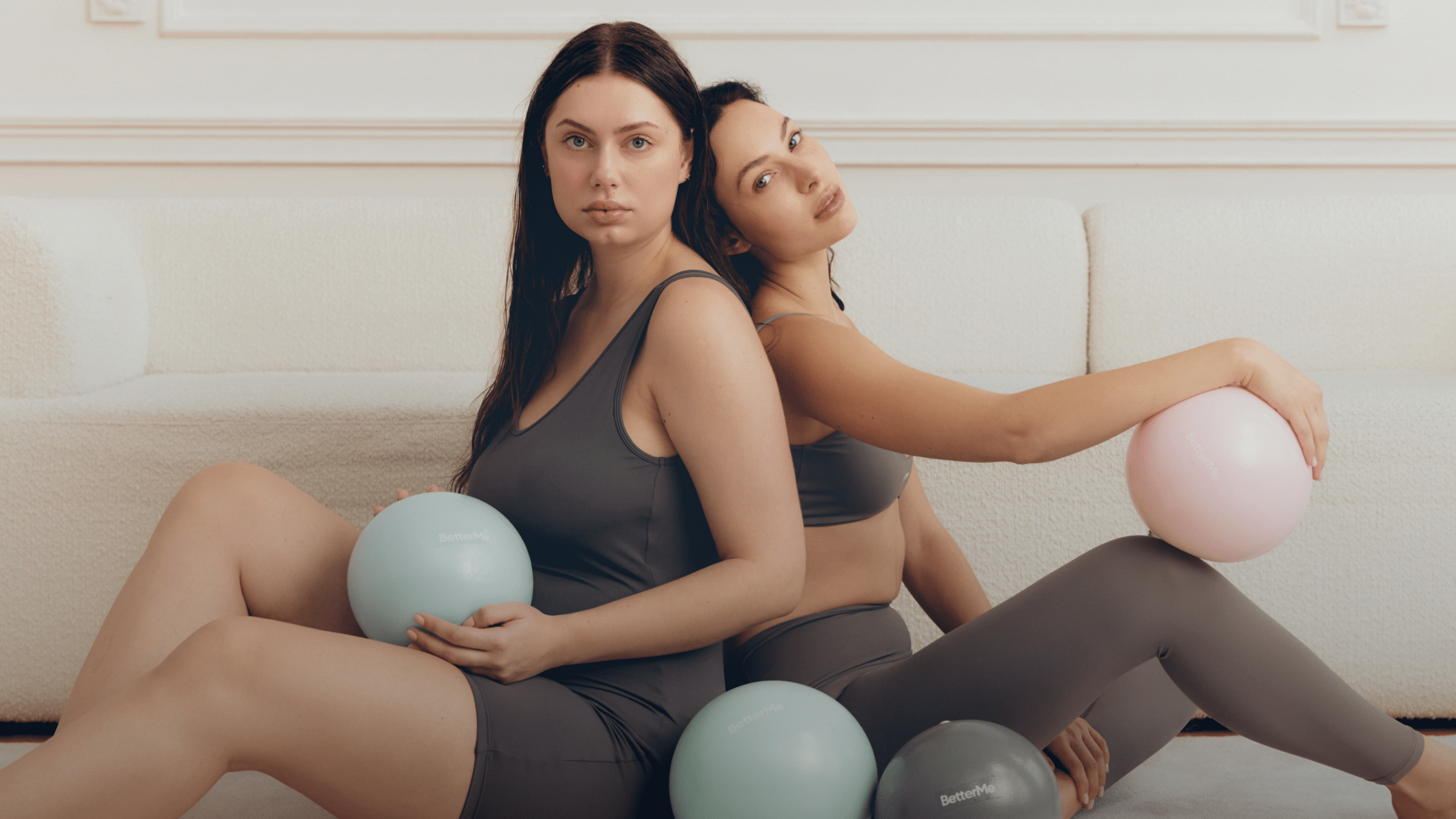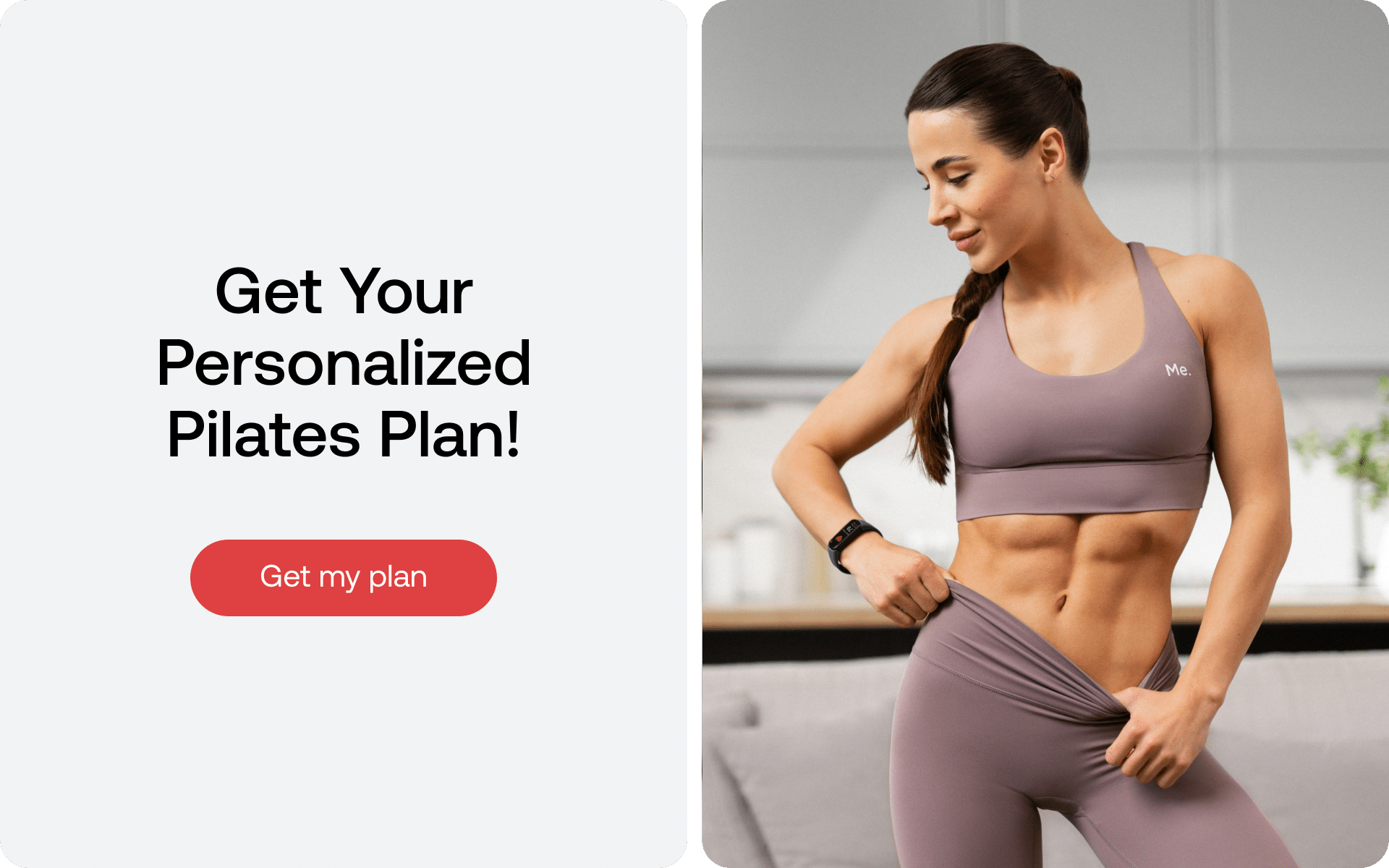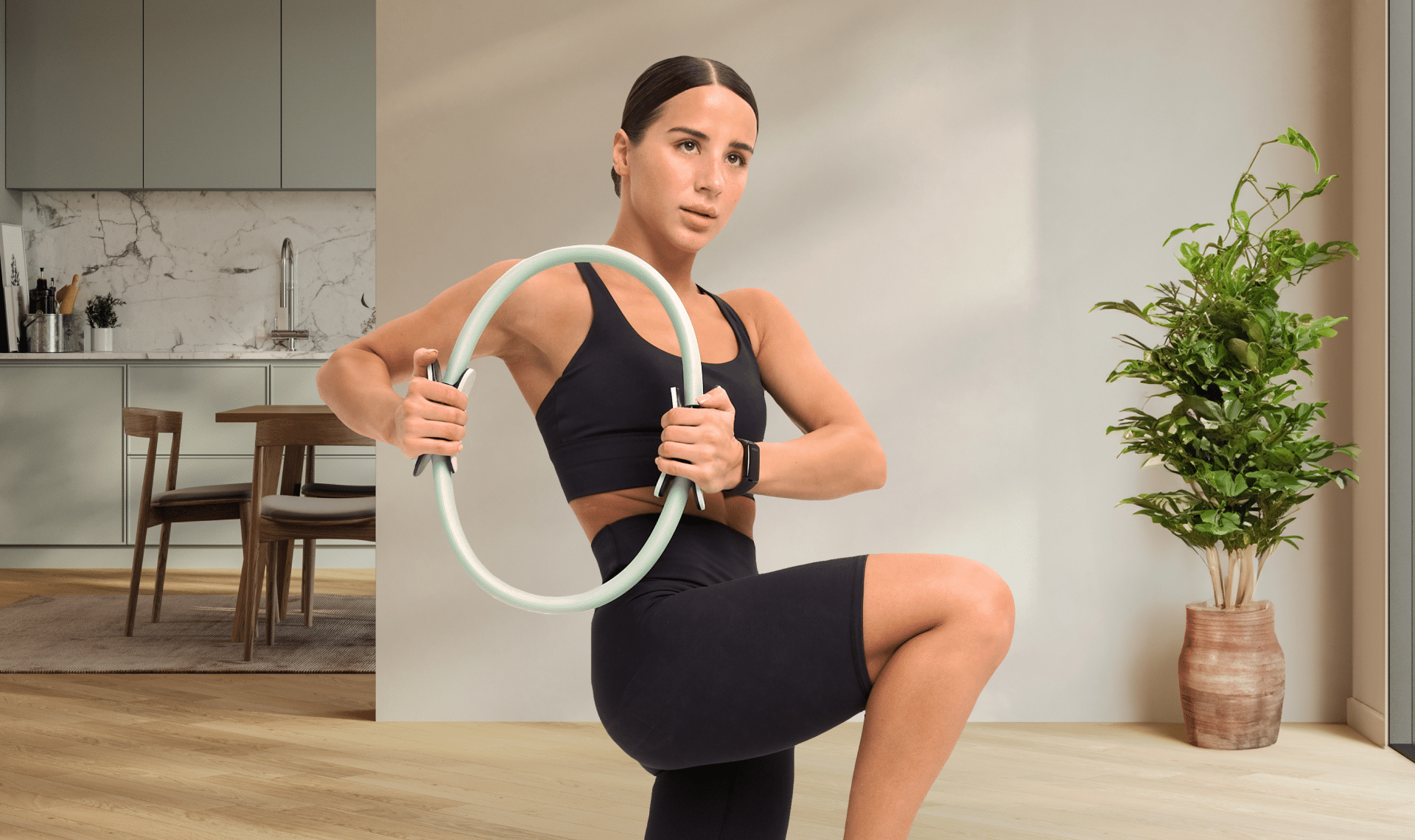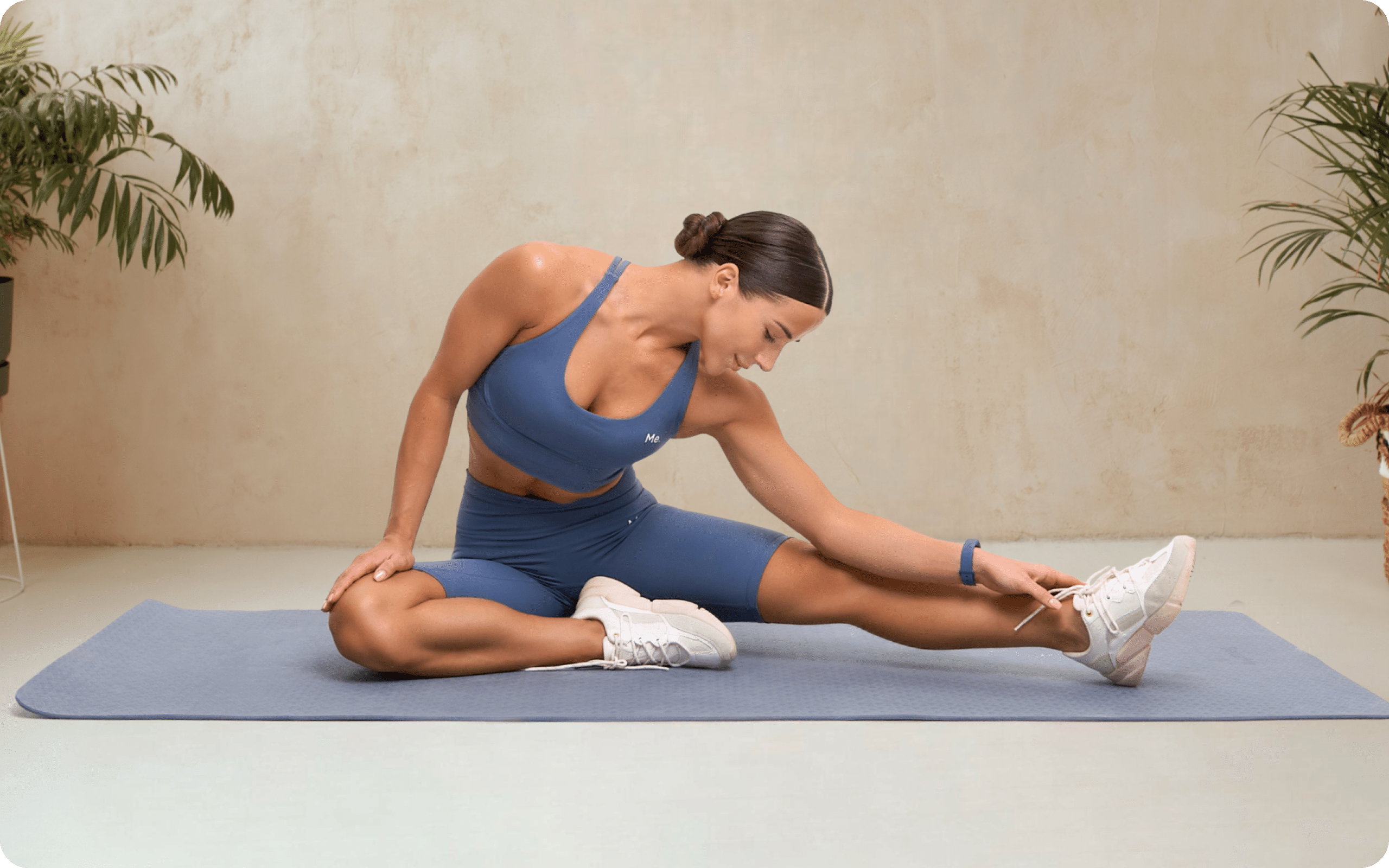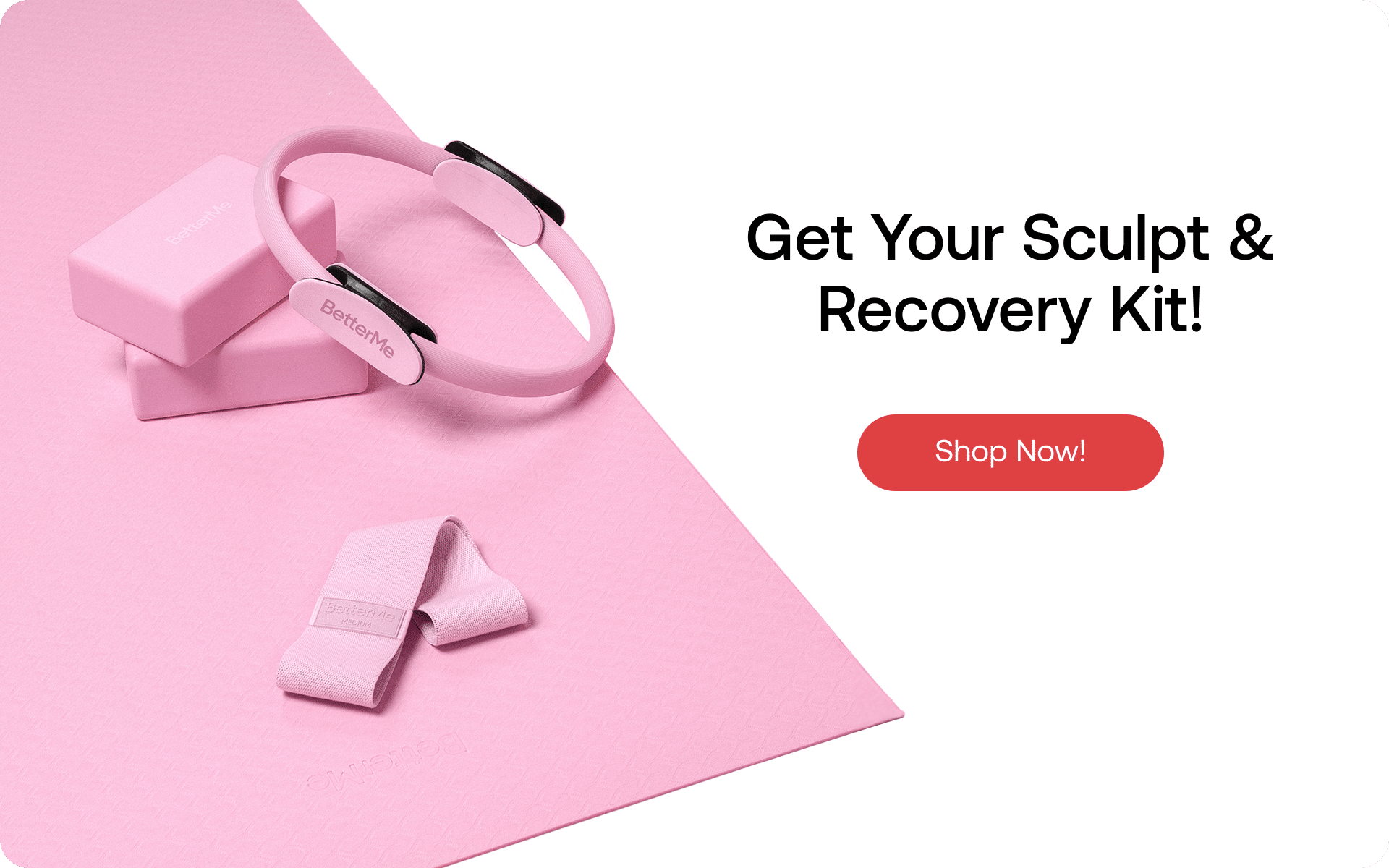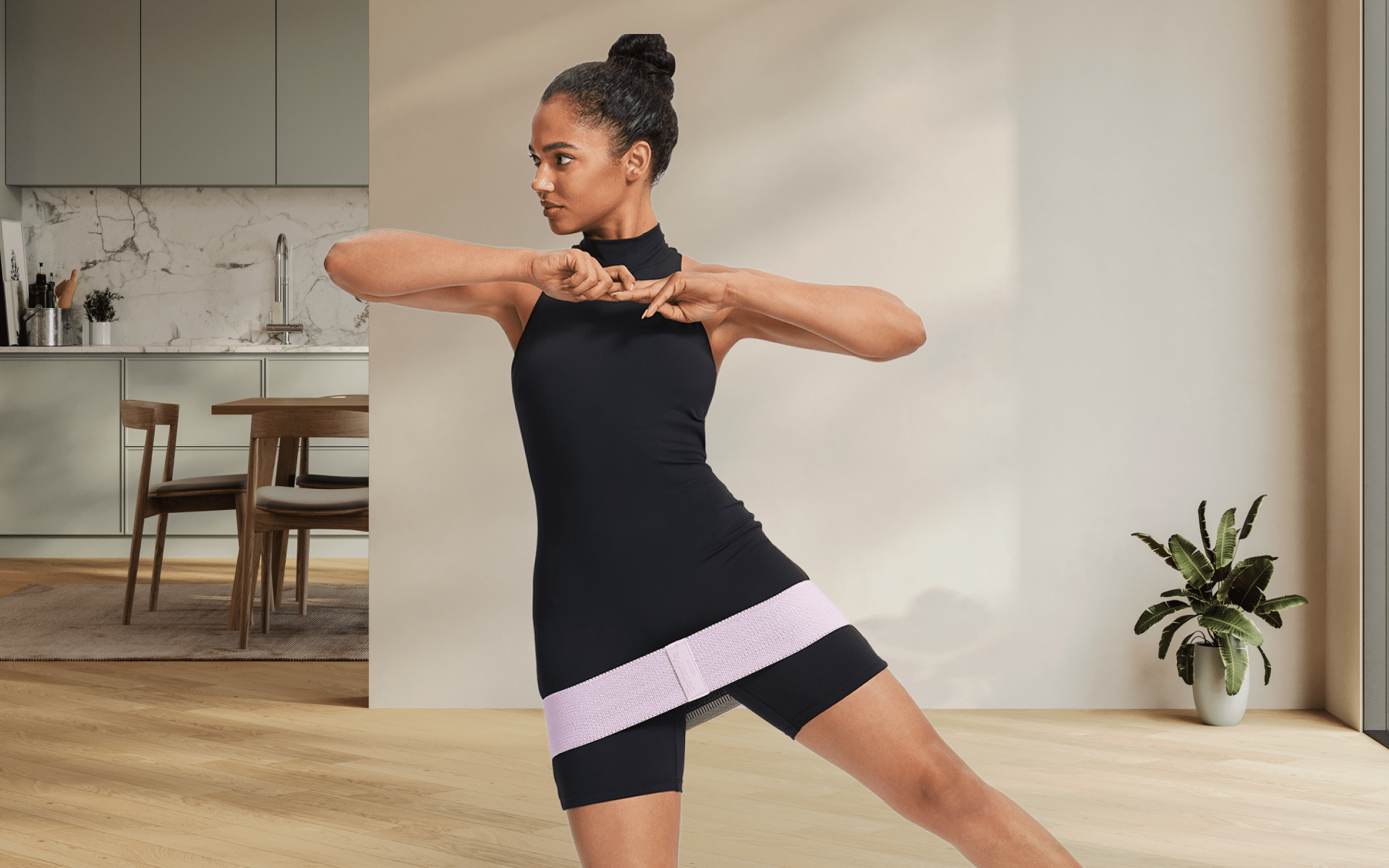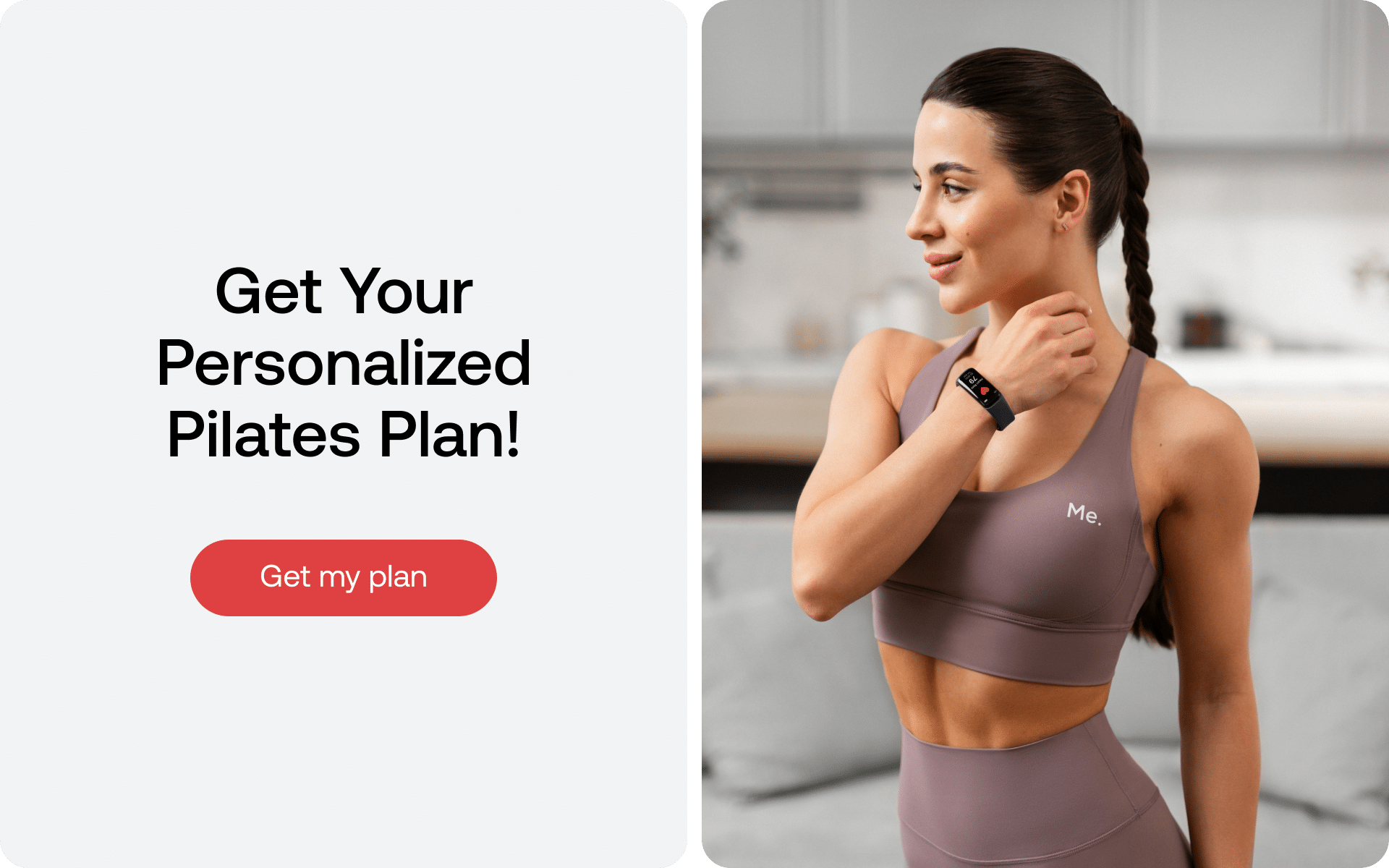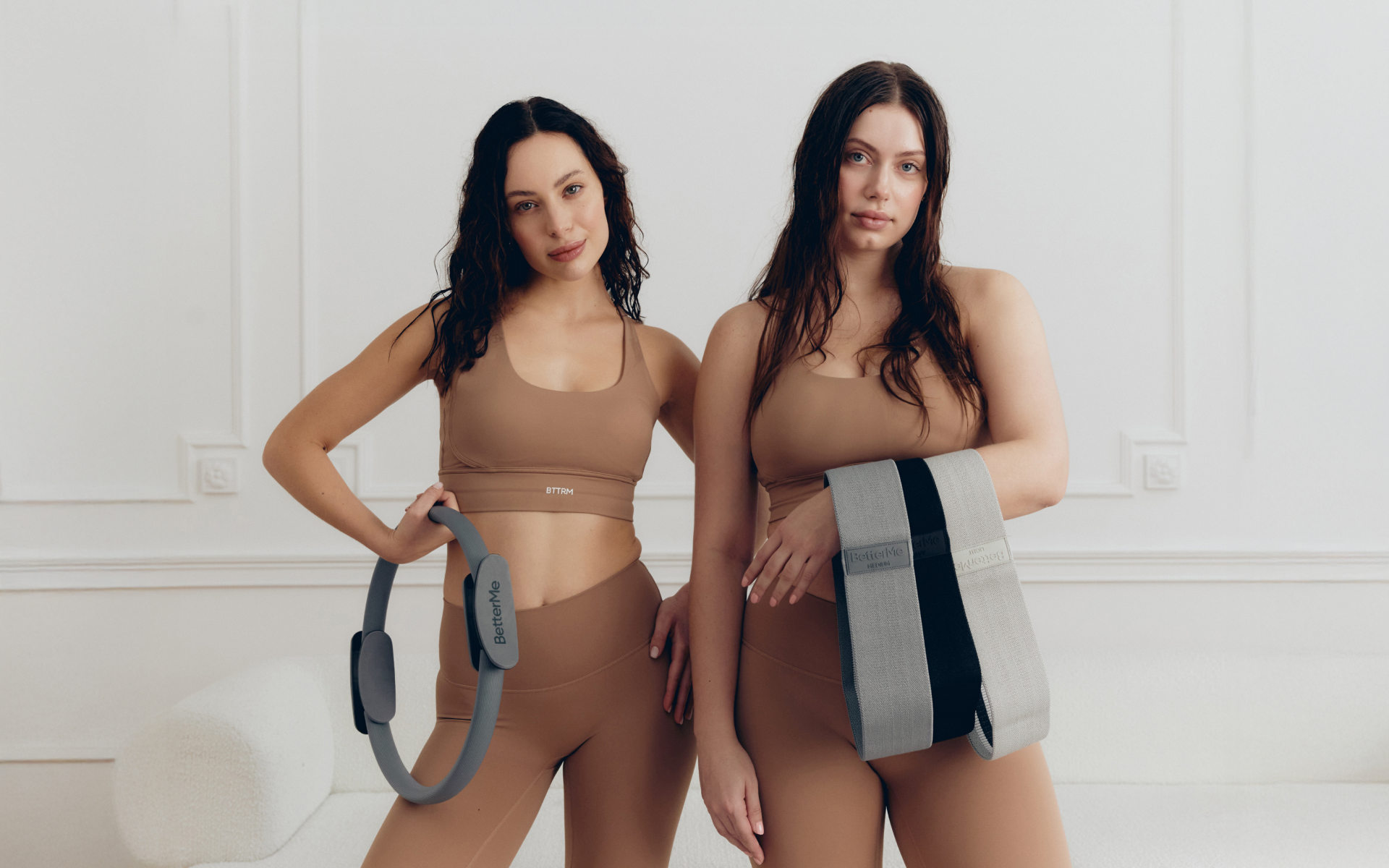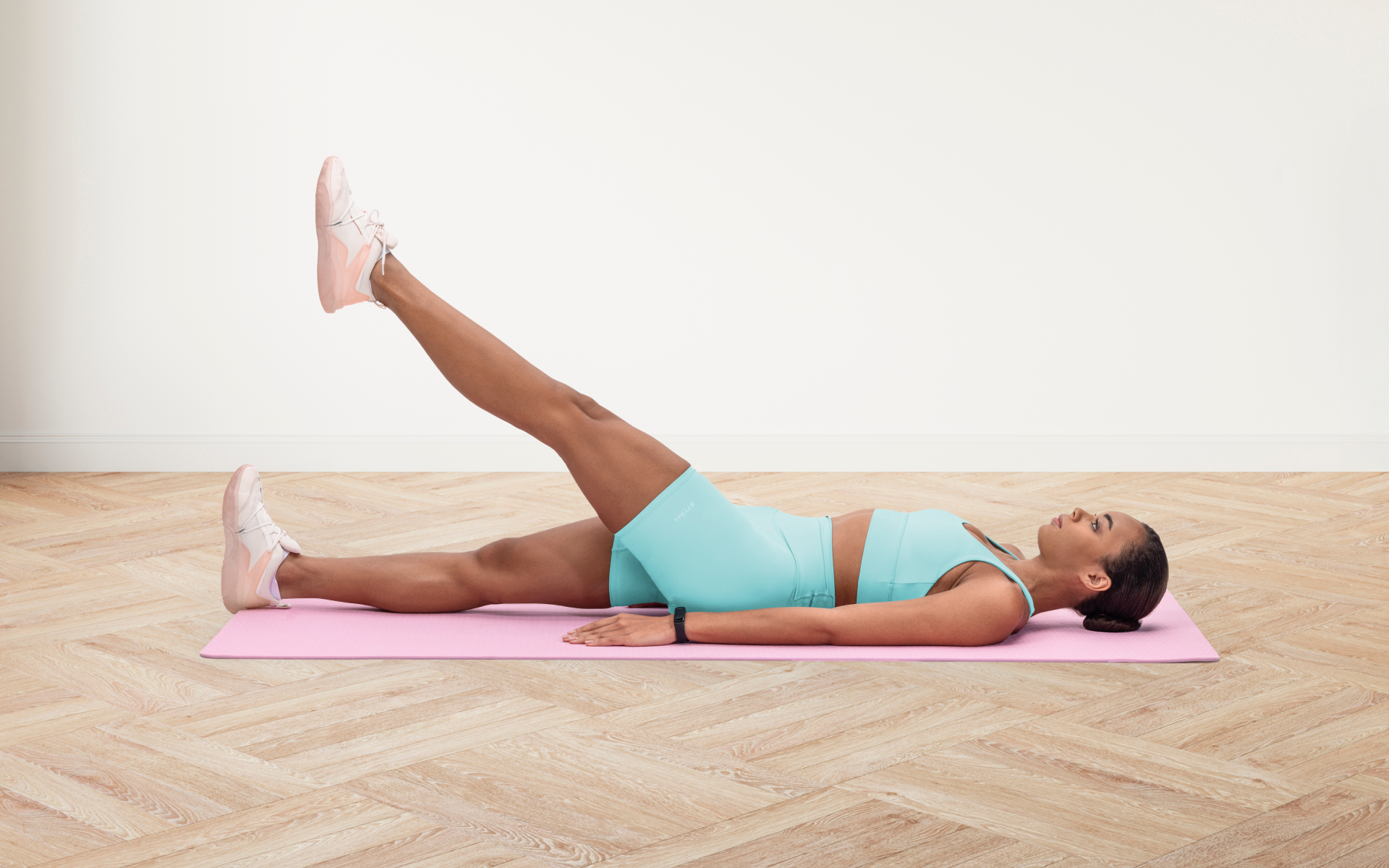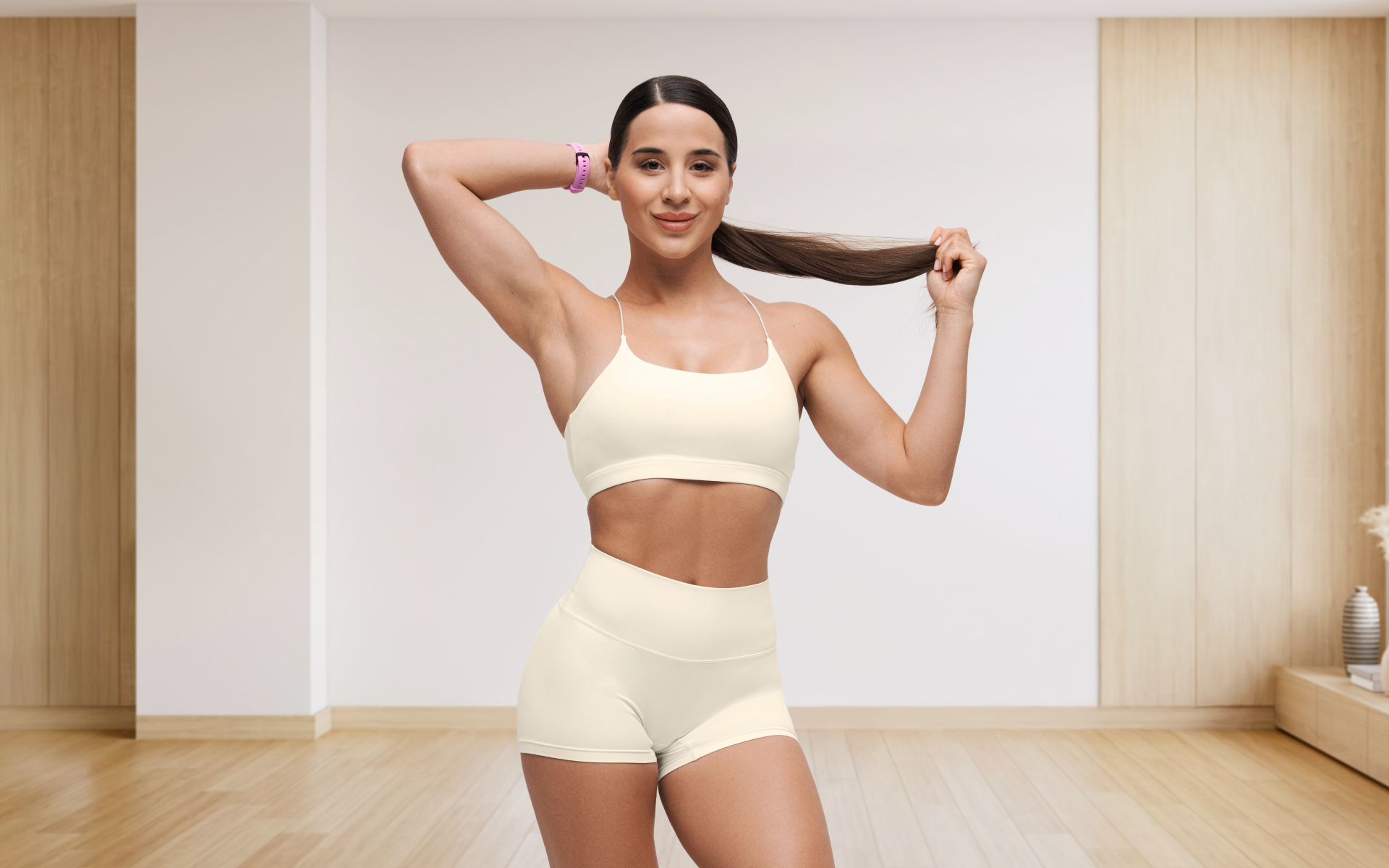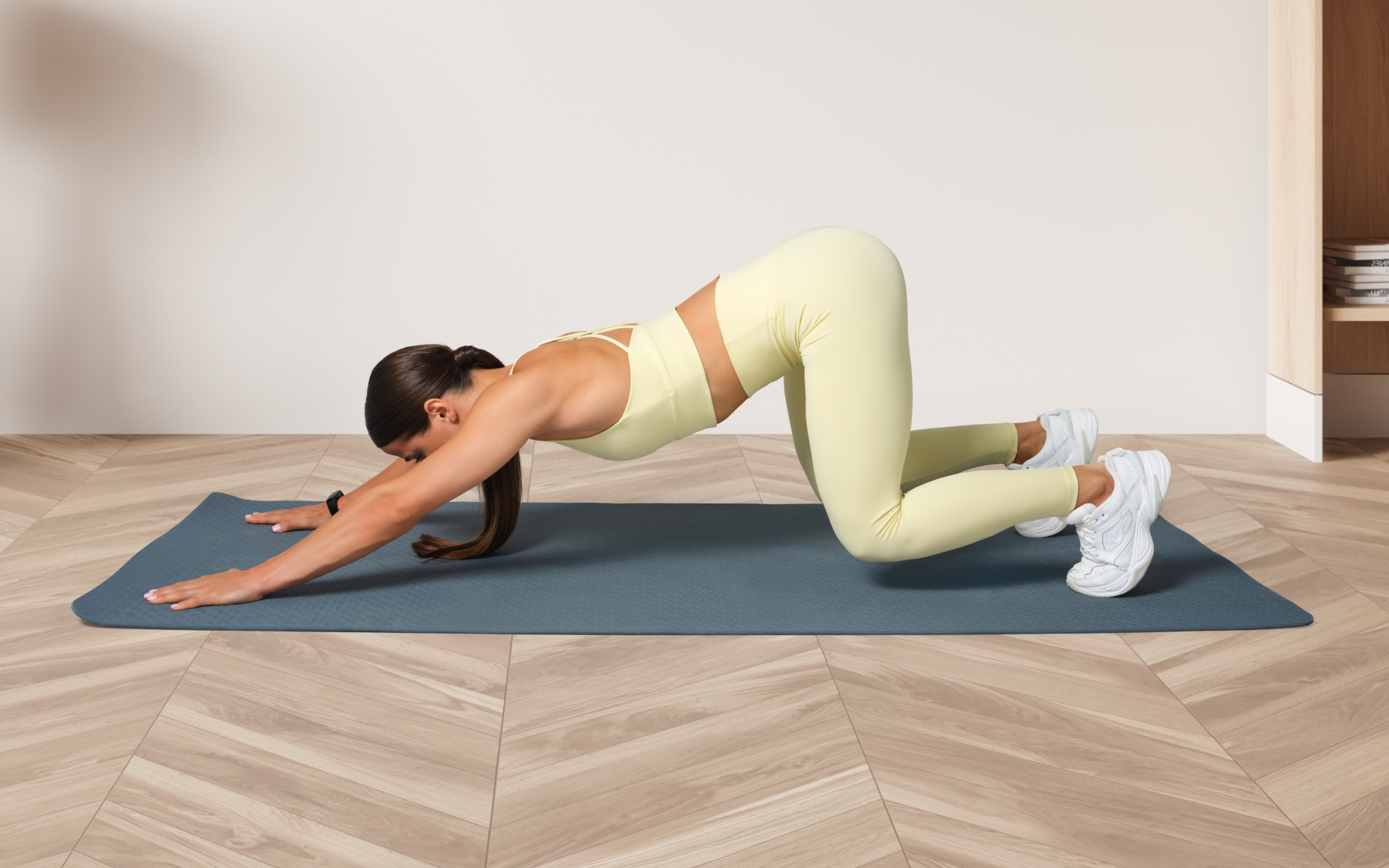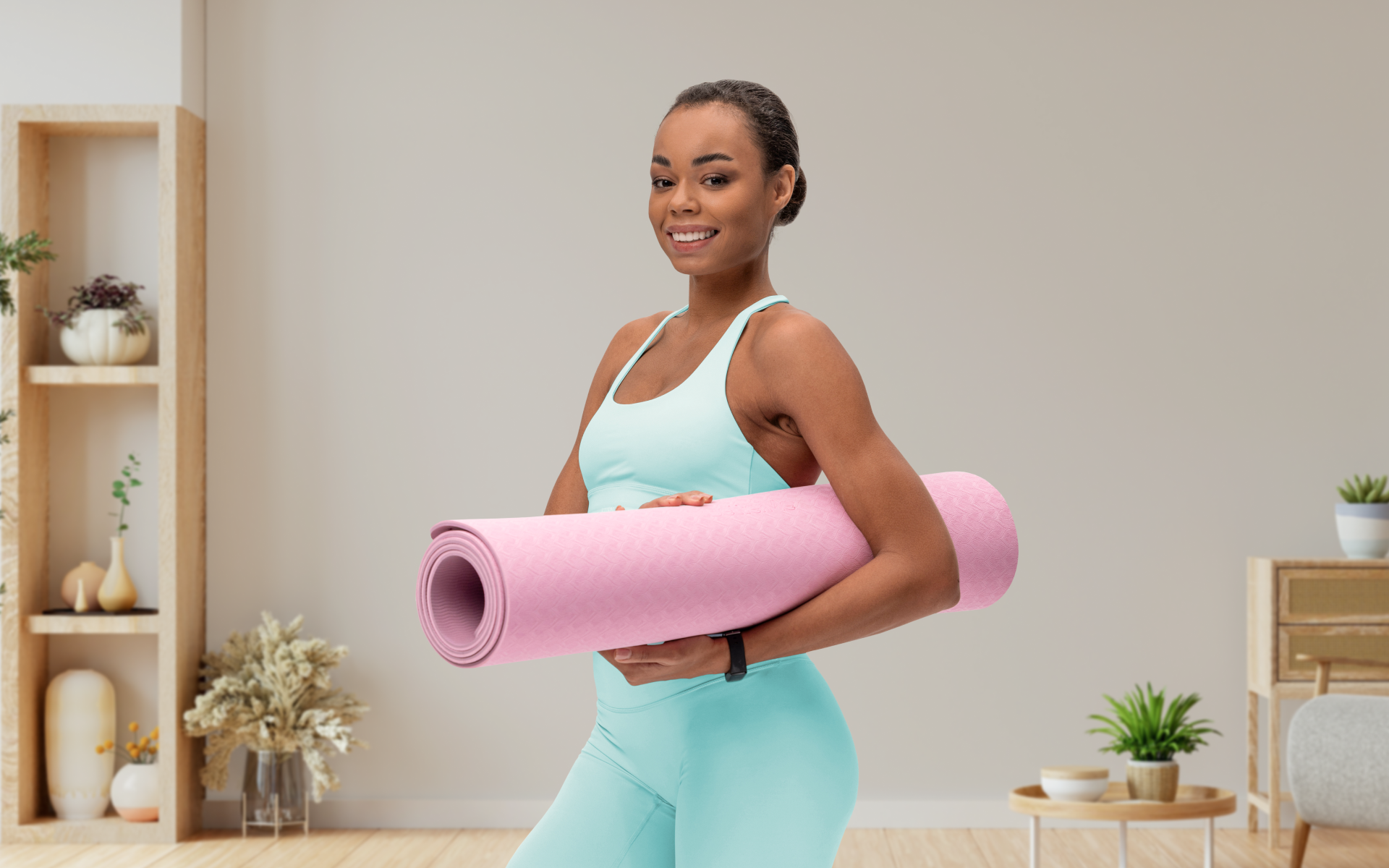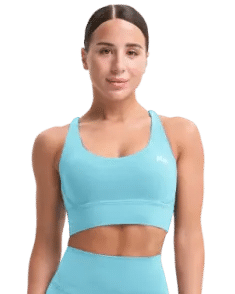Are you ready to spice up your workout routine without all that complicated stuff? Well, say hello to Pilates – the game-changer you didn’t know you needed.
Pilates exercises for beginners are a form of low-impact workout regimens that focus on controlled movements and employ both the mind and body. This exercise is called Pilates after Joseph Pilates, a German physical trainer and the developer of this method (9).
Pilates can enhance muscle tone, improve balance, promote body alignment, strengthen the core, and improve flexibility and mobility. Therefore, Pilates has plenty of perks. The low-impact exercises make core toning less intimidating.
So, grab a comfy mat and let’s dive into the world of Pilates together. Get ready to make sweating look stylish!
How Do You Start Pilates for Beginners?
The world of Pilates may initially seem daunting, but in reality, it’s pretty straightforward. Following Pilates exercises at home is simple and inexpensive – you only need a floor mat and motivation to thrive on this journey.
As with all workout plans and diets, consistency is the key and you should adhere to the Pilates exercises and increase your fitness level gradually. Another important factor is discipline, as Pilates is only effective with disciplined practice.
Pilates workouts include full-body exercises that focus on toning the core muscles while also aligning the body and posture. These core muscles are a powerhouse and include the abdominal muscles, lower back, glutes, hips, inner thighs, and pelvic floor muscles, in addition to the deepest postural muscles(14). The core is engaged through small controlled movements.
Pilates requires controlled, precise movements, so correct and focused movements are more important than they are in other workouts. Its primary focus is on controlling the movements and muscles, and its original name was “Contrology” (9). In addition to control and precision, learning breathing techniques that engage the core and increase lung capacity are other important focuses of Pilates (13).
Collectively, there are six basic techniques to learn at the start of a Pilates exercise regimen:
- Control
- Precision
- Focus
- Centre or Alignment
- Breath
- Flow
Learn these techniques either from an online trainer or from a Pilates instructor at a Pilates studio. Being in the physical presence of an instructor will be useful in terms of posture correction and proper instructions and guidelines. At the same time, resources such as Pilates for beginners at home videos are readily available online and they don’t require physical presence or gym fees.
Going to a studio or gym can be a pricey option, but getting the correct form and posture is something at-home Pilates cannot guarantee. Another bonus of going to the studio is using special Pilates equipment such as the Reformer (9).
These training sessions are essential for getting the hang of the fundamentals and rules of Pilates. The more training you gain and the deeper understanding of the exercises you have, the more likely it will be that you can increase your difficulty level and progress to advanced levels (3).
The BetterMe Pilates Essential Kit is your pocket-sized personal trainer, ready to unleash a full-body transformation. Grip it, stretch it, balance it; each piece invites you to play your way to a toned physique. With comfort at your fingertips and style at your toes, who knew shaping up could feel so good?
Which Type of Pilates Is Best for Beginners?
Pilates has existed for approximately a century, so many modifications and variations exist. Among the many types of Pilates, mat Pilates exercises are ideal for beginners (7).
Mat Pilates provides the necessary training for fundamentals without requiring specialized equipment. Mat exercises can quickly be performed with just a mat, a towel, or even a carpet. Sometimes, props or small equipment for support purposes are used, such as a Swiss ball or magic circle.
Another type of Pilates that is suitable for beginners is wall Pilates. In the wall Pilates workout plan, a wall or any other firm surface is utilized for support and additional resistance. Wall Pilates is safe and easy, even for seniors, as it doesn’t require constant lying and getting up from the floor. It’s low-impact enough to allow beginners to perform it and provides increased stability and balance (2).
The popular 30-Day Wall Pilates Challenge went viral because it’s easy enough to do at home and requires no equipment apart from a wall. It also provides great results for beginners in terms of effective toning and greater core strength.
Other types of Pilates exercises include (16):
- Classical Pilates: The original form developed by Joseph Pilates. It has proper sets of specific exercises in a particular order and employs Pilates traditional equipment such as the Reformer and Cadillac.
- Contemporary Pilates: This merges traditional Pilates with modern exercises and techniques. It also involves newer props such as resistance bands and Swiss balls. It’s the go-to exercise for rehabilitation and physiotherapy.
- Reformer Pilates: True to its name, this type employs the Reformer machine, which can be used to add more resistance or even provide support.
- Clinical Pilates: This is Pilates specifically for rehabilitation purposes and is prescribed by professional medical personnel for treating injuries or improving posture or flexibility. It is also suitable for prenatal and postnatal exercises.
Mat Pilates doesn’t require any equipment and can be done anywhere. This makes it suitable for beginners, as they can do it even at home or in a class.
The intensity level of these exercises can be increased by incorporating Pilates resistance band exercises. And let’s not forget that mat Pilates doesn’t require any special equipment, so it’s considerably cheaper, and mat classes are often less expensive(7).
Read more: Wall Pilates for Butt: A Quick Guide for Beginners
Is Pilates Hard for Beginners?
The promotional images and videos for Pilates exercises and classes generally show professionals performing advanced-level Pilates exercises. Even some acrobats and dancers are shown with perfect posture and form as they perform some of the most difficult Pilates exercises. As a result, many people have a preconceived notion that Pilates is an impossibly difficult exercise regimen.
Generally, Pilates is adaptable to different fitness levels, and with proper instruction and practice, you can gradually improve and advance in your Pilates practice. The exercises can be modified to suit the preference and personal fitness level of every individual, which makes it quite easy to accomplish.
Even for professional athletes, Pilates exercises start at the beginner level with the basics. They then progress to advanced levels as the foundation exercises are perfected. The primary things to learn are control and precision to control the muscles and posture while stabilizing body alignment (12).
To summarize, the adaptability of exercises and availability of modifications for different skill levels for every move make Pilates a great option for all fitness levels, including beginners.
What Are the Best Pilates Exercises for Beginners?
Venturing into the world of Pilates requires following proper workout plans that are suitable for beginners. Some Pilates exercises are better for beginners as they focus on fundamental principles and work on improving breathing and form. If Pilates were a tree, the basics of Pilates would be the root exercises.
Advanced exercises pose more challenges, but are essentially based on a particular root exercise. The 10 root exercises form the base of every Pilates move. Beginners must master these root exercises to start their Pilates journey (3) (15).
The 10 essential root exercises suitable for beginners are as follows:
- The Hundred: The Hundred is an original classic move and the basis of most Pilates Exercises. It strengthens the core and increases overall body stamina. In this exercise, you lie on your back with your legs lifted in a tabletop position (you can extend the legs straight for a more advanced version) and your arms reaching long by your sides. You then pump your arms up and down while breathing in a rhythmic pattern for a total count of 100.
- The Saw: This exercise primarily stabilizes the core and lower back. It uses a sawing motion while twisting the midsection. Simply sit with your legs extended forward with a wide gap between your feet, then twist the torso to touch your leg with the opposite hand and repeat on the other side.
- Roll-up: This helps with spinal mobility, in addition to breathing and abdominal flexibility. Lie on your back on the mat and lift your arms in the air. In a rolling manner, lift your spine from the mat, articulating it up vertebra by vertebra. Roll into a curling sitting position using only the abdominal muscles.
- Leg Circles: This is a Pilates exercise that focuses on strengthening the core, hip flexors, and inner and outer thigh muscles while also improving flexibility and mobility in the hip joints. To perform Leg Circles, lie on your back with one leg extended vertically toward the ceiling and the other straight on the floor. You then make controlled circular movements with your top leg while keeping the other leg stable and engaged. The movement involves circling your leg in one direction for a set number of repetitions before switching directions. Leg Circles help stabilize the pelvis, improve hip mobility, and enhance overall lower-body strength and control.
- All Fours: This exercise increases core stability and strength. It requires kneeling on all fours. You then extend one leg behind and the opposite hand at the front, before doing the same with the other hand and leg.
- Single- and Double-Leg Stretches: Start lying on your back. For a Single-Leg Stretch, lift your head and shoulders, lift one leg parallel to the floor, and bring the other leg close to your chest. Switch legs, keeping the core engaged. For a Double-Leg Stretch, extend both legs and reach your arms overhead, then circle your arms out and back as you bend your knees back in.
- Pelvic Curl: This is also called a Pelvic Tilt. Lie on your back with your knees bent and feet flat on the floor. For a posterior tilt, gently flatten your lower back against the mat by tilting your pelvis backward. For an anterior tilt, arch your lower back slightly away from the mat by tilting your pelvis forward. Alternate between these movements to engage different muscle groups and improve pelvic stability and control.
- Spine Twist: Lie on the mat with your hands extended to the side and lift your legs parallel to the floor, before twisting your knees to one side then the other. Keep your rotation centered by keeping the opposite shoulder firmly on the mat. Keep your knees and toes together and initiate the movement with your abdominal muscles.
- Bridge: As with the standard Bridge, lie on the mat with your knees bent and feet flat on the floor. Lift your pelvis while keeping your feet stable on the mat, your core engaged, and your pelvis in a neutral position
- Rolling like a ball: This is a classic Pilates exercise that focuses on spinal mobility, core strength, and balance. Sit on the mat with your knees bent, feet lifted, and arms wrapped around your legs. Round your spine into a C-curve, balancing on your tailbone. Inhale as you roll backward onto your upper back, keeping your chin tucked. Exhale as you roll back up to the starting position, maintaining control. Repeat the movement, rolling smoothly and evenly to massage the spine and strengthen the core.
Unbox the BetterMe Pilates Essential Kit and say hello to smart workouts at home or on the go. Slip into the grip socks and stand your ground in style, or loop in some fun with our resistance bands. It’s everything you need to stretch your limits and sculpt your body!
How Do You Add Resistance to Pilates?
To increase the intensity of Pilates, you can add exercise equipment. Resistance and strength training in Pilates is also done by adding resistance bands, circles, rings, or weights. This added resistance helps build muscular strength and endurance, in addition to improving stamina and balance. Increasing resistance doesn’t necessarily mean that the level has progressed from beginner to advanced. Rather, Pilates resistance exercises for beginners often provide support in difficult moves (1).
To amp up the resistance, Pilates resistance bands and Pilates rings are good options. Other equipment and resistance props that can be incorporated into Pilates resistance exercises for beginners include:
- Dumbbells
- Weight bands
- Weight ring
- Pilates balls
There are many options for incorporating resistance in Pilates exercises and you should choose them based on your personal preference.
What Kind of Resistance Band Is Preferred for Pilates?
There are many different resistance bands available on the market and choosing one that is suitable for Pilates requires you to consider many factors. The most important factor is the material of the resistance band and the level of resistance it offers. Latex-free resistance bands work well for Pilates resistance exercises.
Another important factor is that open-ended resistance bands are best suited for Pilates, due to the type of movement and exercise in Pilates. That being said, loopless and no-handle resistance bands are preferred for Pilates. In addition to being latex-free and without handles or loops, Pilates resistance bands should be incredibly stretchable and durable, but not slippery for safety purposes (10).
What Is the Best Way to Start Pilates Resistance Training?
Before you start resistance training, make sure to practice the basics of Pilates and follow its principles smoothly. When you’re certain about all the movements, you can gauge your fitness level and the limits of resistance that your body can endure. Depending on your expertise in Pilates exercises, fitness level, and resistance endurance, you should choose the right resistance band or equipment for you.
You shouldn’t abruptly add the full amount of resistance, instead gradually easing into it by adding smaller resistance at first and slowly increasing it. Then, choose either Pilates resistance bands or Pilates ring exercises for beginners, whichever you prefer, and use them consistently. Make sure you consult an instructor before adding resistance to your Pilates exercises.
Read more: Pilates Full Body Workout for Beginners (No Equipment Needed)
FAQs
How often should a beginner do Pilates?
The frequency of Pilates exercises for beginners should ideally be two to three times a week. For optimum results, the number of sessions per week should be at least three (6).
How do I prepare my body for Pilates?
To ease into a Pilates exercise plan, consult a healthcare professional and Pilates instructor. After you get a customized plan, start doing warm-up exercises and practice breathing exercises for Pilates. Prepare the necessary gear and start following a particular Pilates exercise plan that is suitable to your fitness level. Create a soothing environment and relax your mind as Pilates is basically focused on mind-body connection (12).
Is Pilates better than walking?
Pilates and walking are very different exercises with different purposes. Pilates has been proven by research to be better than walking for increasing metabolic markers (5). However, walking at a higher speed has a better response. Therefore, in order to gain maximum benefits, you may want to consider combining walking with Pilates. This will ensure mindfulness, proper posture, and agility during walking (8).
Is Pilates alone enough exercise?
Pilates is a great component of an exercise routine, but it’s best when it’s combined with other types of exercise, such as strength training. Remember, rest days are important and you should aim for 1-2 rest days every week to allow your body time to recover. In addition, Pilates alone is not ideal for building muscles or making you lose weight, but it will help tone and exercise your muscles (4). It’s better to add Pilates to another workout regimen.
DISCLAIMER:
This article is intended for general informational purposes only and does not serve to address individual circumstances. It is not a substitute for professional advice or help and should not be relied on for making any kind of decision-making. Any action taken as a direct or indirect result of the information in this article is entirely at your own risk and is your sole responsibility.
BetterMe, its content staff, and its medical advisors accept no responsibility for inaccuracies, errors, misstatements, inconsistencies, or omissions and specifically disclaim any liability, loss or risk, personal, professional or otherwise, which may be incurred as a consequence, directly or indirectly, of the use and/or application of any content.
You should always seek the advice of your physician or other qualified health provider with any questions you may have regarding a medical condition or your specific situation. Never disregard professional medical advice or delay seeking it because of BetterMe content. If you suspect or think you may have a medical emergency, call your doctor.
SOURCES:
- 5 benefits of using resistance props in your Pilates mat work (2023, laurenhiltonpilates.com)
- 10 Beginner Wall Pilates Exercises To Try At Home (2023, bustle.com)
- 10 Essential Pilates Exercises for Beginners (2019, basipilates.com)
- 10 Things to Know Before You Take Pilates Classes (2022, self.com)
- Cardiorespiratory responses: Pilates compared to different walking speeds in healthy adults (2023, pubmed.ncbi.nlm.nih.gov)
- How Often Should A Beginner Do Pilates? (2022, shefit.com)
- How to Get Started With Pilates Workouts: An Absolute Beginner’s Guide (2022, everydayhealth.com)
- Is Walking Better For Exercise Or Pilates? Why Not Do Both With Pilates Walking? (2022, santispilates.com)
- Pilates (2023, webmd.com)
- Pilates Band vs Resistance Band (2022, pilatesmovesyou.com)
- Pilates for Beginners Guide FAQs (2016, pilatesanytime.com)
- Pilates for Beginners: Your Complete Guide to Getting Started (2021, healthline.com)
- Pilates Method for Lung Function and Functional Capacity in Obese Adults (2015, pubmed.ncbi.nlm.nih.gov)
- Pilates Powerhouse – What Does it Mean? (2015, loveforpilates.com)
- The Pilates Basic 10 (2020, mogopilates.com)
- Types of Pilates: What Pilates class is right for you? (2021, complete-pilates.co.uk)
